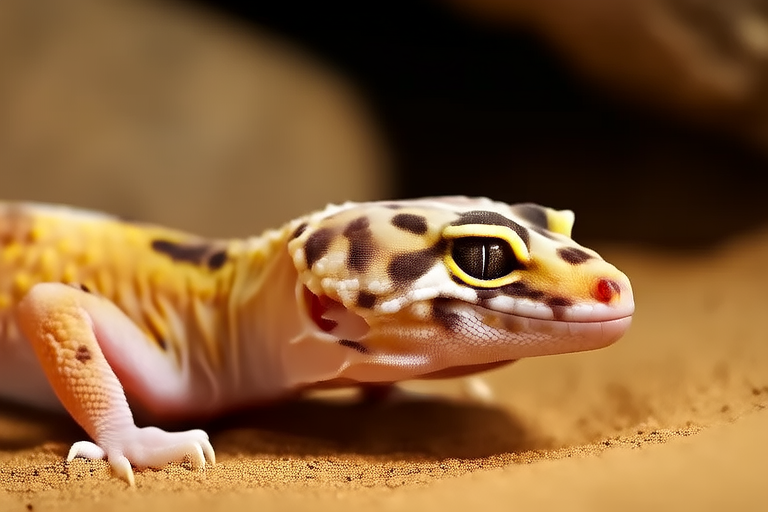Unleashing the Mystery: Understanding the Behavior of Leopard Geckos
Leopard Geckos: A Popular Pet Choice
Leopard geckos (Eublepharis macularius) have gained immense popularity among reptile enthusiasts due to their docile nature, ease of care, and striking appearance. These small lizards, native to the arid regions of Afghanistan, Pakistan, and parts of India, boast unique patterns that resemble the spots of leopards, hence their name. Their manageable size, typically reaching lengths of 8 to 10 inches, makes them ideal for apartment living. Additionally, leopard geckos require less maintenance compared to many other reptiles, making them a great choice for both novice and experienced pet owners.
Natural Habitat and Its Influence on Behavior
The natural habitat of leopard geckos plays a crucial role in shaping their behavior. Native to the rocky, semi-desert regions of South Asia, these geckos thrive in environments with distinct day-night temperature variations. In the wild, they seek shelter during the day under rocks or in burrows to avoid the harsh sunlight and extreme temperatures. This preference for cooler, shaded areas explains why your pet leopard gecko might spend most of its time hiding during daylight hours.
Leopard geckos are crepuscular, meaning they are most active during twilight hours when the temperature is more moderate. They rely on these periods to hunt insects, which are also more active at this time. Understanding these natural rhythms can help you provide a suitable environment for your pet, ensuring it mimics its natural habitat as closely as possible.
Hunting, Basking, and Hiding: Key Behaviors Explained
Hunting: Leopard geckos are opportunistic hunters. In the wild, they primarily feed on insects like crickets, mealworms, and waxworms. Captive geckos exhibit similar behavior, often pouncing on prey with surprising speed. Their keen sense of smell helps locate food even in low-light conditions. As a responsible owner, ensure a steady supply of appropriately sized insects to maintain your gecko’s health and activity levels.
Basking: Although leopard geckos do not bask in the sun like some other reptiles, they still need a heat gradient within their enclosure to regulate body temperature. Providing a warm side (around 90°F) and a cool side (around 75°F) allows them to thermoregulate effectively. This behavior is essential for digestion and overall health. Regular monitoring of the temperature gradient ensures your gecko remains comfortable and healthy.
Hiding: The need to hide is deeply ingrained in leopard geckos’ behavior. In the wild, hiding provides protection from predators and harsh weather. In captivity, providing ample hiding spots is vital for your gecko’s well-being. These spots should be secure enough to make the gecko feel safe but not so tight that they cause stress. Properly placed hides encourage normal behavior and reduce anxiety.
Social Behavior: Interactions with Other Leopard Geckos and Environment
Leopard geckos are generally solitary creatures in the wild, and they prefer to live alone. While they may coexist peacefully in groups in captivity, it’s important to introduce them gradually and monitor their interactions closely. Male geckos, in particular, can become aggressive towards each other, especially during breeding season. Females tend to be more tolerant, but overcrowding can lead to stress and health issues.
In terms of interaction with their environment, leopard geckos are curious and will explore their surroundings. They enjoy climbing and burrowing, so providing enrichment through varied substrates and climbing structures can keep them mentally stimulated. It’s essential to supervise any new additions to their habitat to ensure safety and prevent potential injuries.
Interpreting Common Behaviors for Proper Care
Understanding your gecko’s behavior is key to providing optimal care. For instance, if your gecko is spending excessive time in its hide, it could indicate discomfort with its environment. This might be due to incorrect temperature settings, inadequate hiding spots, or insufficient lighting. On the other hand, increased activity around feeding times suggests a healthy appetite and interest in food.
Signs of distress include lethargy, loss of appetite, or unusual shedding patterns. If you notice any of these signs, it’s advisable to consult a veterinarian specializing in reptiles. Regular health checks and maintaining a clean, well-maintained enclosure are also critical for preventing illnesses and ensuring your gecko’s longevity.
Tips for New Owners: Understanding and Responding to Your Leopard Gecko’s Needs
For new owners, the transition period can be challenging. Here are some tips to help you understand and respond to your leopard gecko’s needs:
- Establish a Routine: Create a consistent feeding schedule and handling routine to help your gecko feel secure. Leopard geckos are nocturnal, so evening is the best time for handling.
- Monitor Environmental Conditions: Use thermometers and hygrometers to monitor temperature and humidity levels. Adjustments may be necessary depending on the season or the gecko’s behavior.
- Encourage Exploration: Provide a variety of hiding spots and climbing structures to stimulate your gecko’s natural instincts. Rotate items periodically to keep the environment interesting.
- Be Patient: Leopard geckos can be shy, especially when first brought home. Give them time to acclimate to their new surroundings before attempting to handle them.
By following these guidelines, you’ll be better equipped to meet the needs of your leopard gecko and ensure a happy, healthy life for your pet.
Conclusion
Understanding the behavior of leopard geckos enriches the bond between pet and owner, enhancing the overall experience of keeping these fascinating creatures. By recognizing their natural instincts and providing a suitable environment, you can ensure your gecko leads a fulfilling life. Whether you’re a seasoned reptile enthusiast or a first-time owner, taking the time to learn about your pet’s behavior is a rewarding endeavor. With proper care and attention, your leopard gecko will thrive, offering years of companionship and joy.
